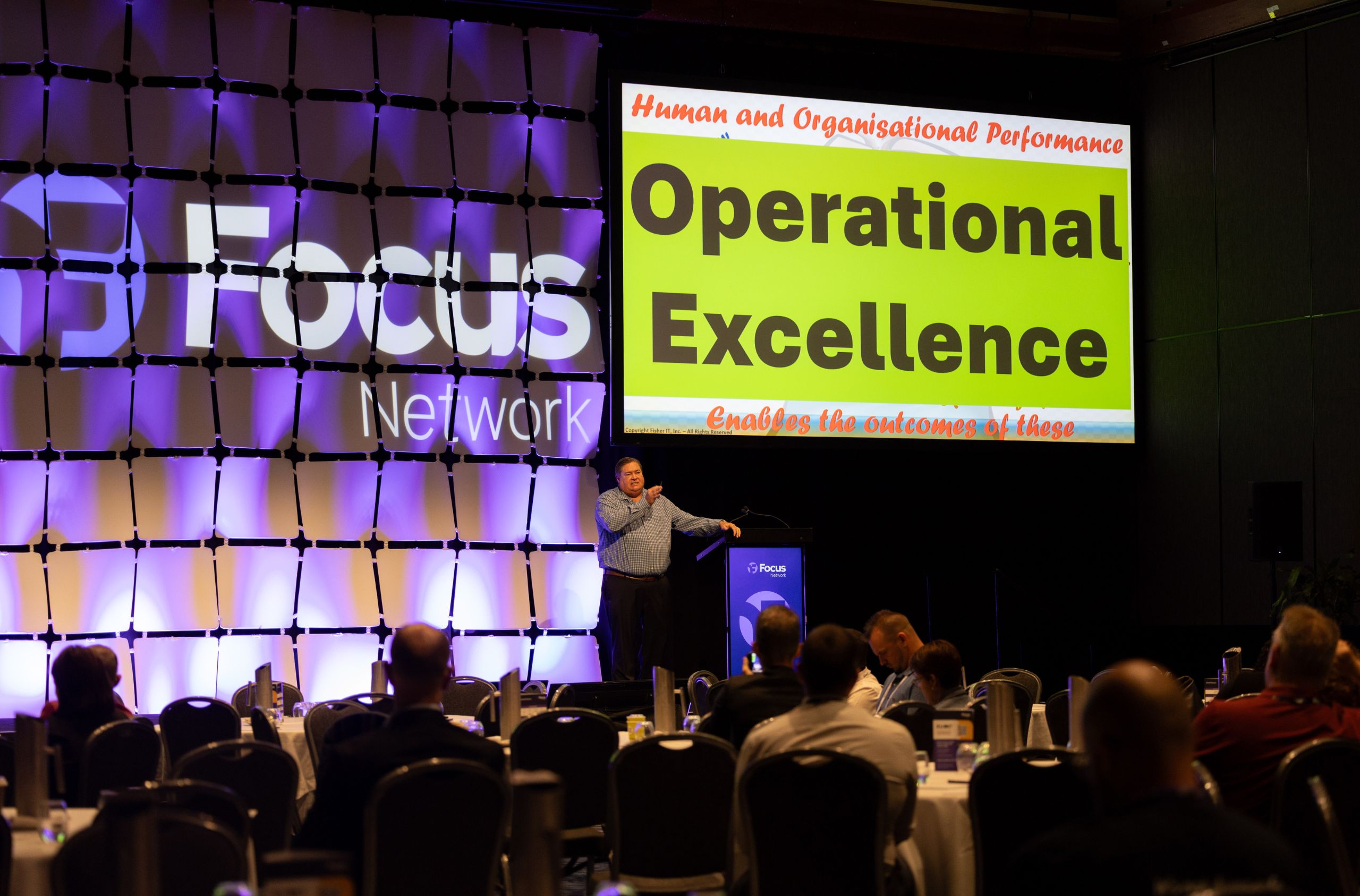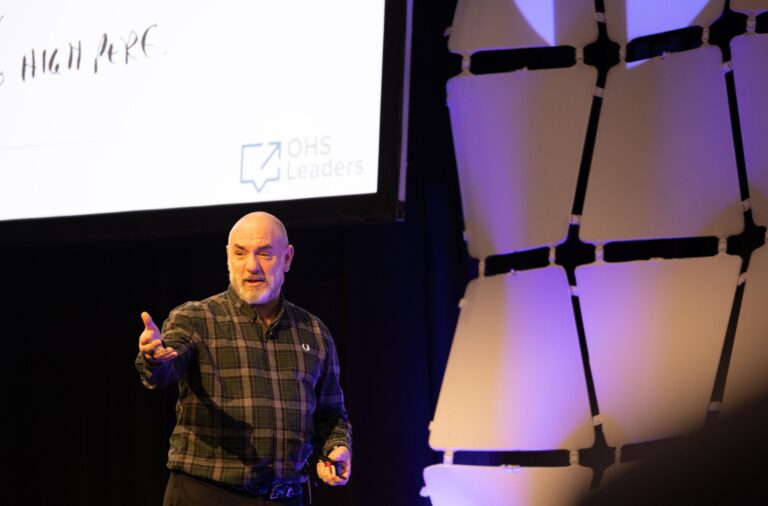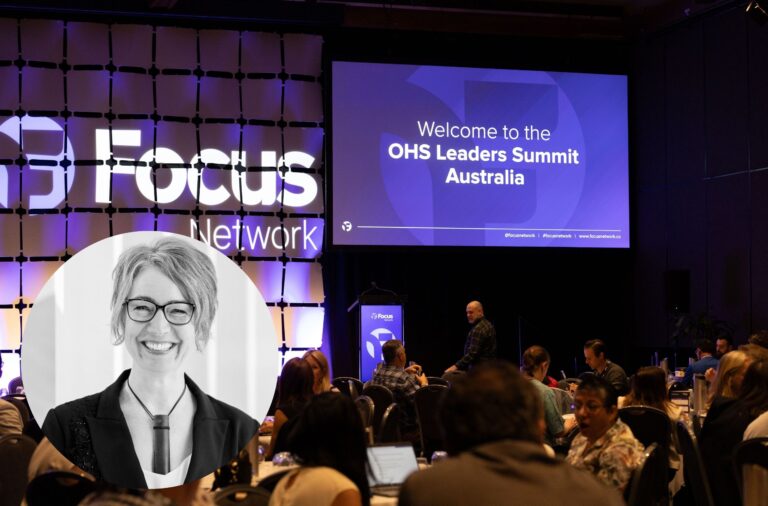
Keynote Speaker: Rob Fisher
At the OHS Leaders Summit in Gold Coast, Rob Fisher took the stage with a message honed over decades of global experience: stop chasing trends, start embedding practical tools, and take the next logical step in your organisation’s journey toward operational excellence.
Fisher, founder of Fisher Improvement Technologies, has spent over 30 years helping organisations across 40 countries understand why people make mistakes—and how to manage those mistakes before they become catastrophic. With over 1.2 million people trained in recognizing error vulnerability, Fisher’s message comes with credibility, clarity, and a challenge: stop treating safety like a side project.
“You can be safe without being operationally excellent, but you can’t be operationally excellent without being safe,” he said. “If we focus on holistic operational excellence, safety comes along with it.”
Stop chasing what’s new. Start doing what works.
Fisher’s message was rooted in Human and Organisational Performance (HOP)—but not the oversimplified, rebranded versions that too often become slogans. He reminded us that safety is not a side project or a campaign. It’s an outcome of something bigger: operational excellence.
This was an invitation to take the next logical step.
From Safety Slogans to Embedded Systems
In recent years, many organisations have embraced HOP in name but not in practice. The phrase “error is normal” has become a banner for progressive safety—but without real change on the ground, it risks becoming just that: a banner.
Fisher’s frustration here was evident.
“People talk about ‘error is normal’ like it’s a mantra. But it’s not a mantra—it’s a principle. If you’re not giving workers tools to recognise and respond to vulnerability, you’re not doing HOP.”
What does that look like in practice? It’s not policy changes or training sessions in isolation. It’s task-based systems that examine how fatigue, distraction, procedures, personal stress, and environment shape daily decisions.
It’s replacing “be careful” with meaningful tools that actually interrupt the conditions that lead to harm.
Blame Isn’t a Culture, It’s a Human Reflex
One of the boldest challenges Fisher posed was this: what if there’s no such thing as a blame culture?
“Blaming is just a natural human instinct. So instead of trying to ‘change culture,’ why not give people tools to interrupt that instinct?”
Rather than demonize blame, Fisher reframed it as a behaviour that can be interrupted. A simple metaphorical tool—like a pause button—can help leaders and teams move from reaction to reflection. This, he argued, is how behaviour changes. And behaviou? That’s how you shift culture.
“Culture changes one behaviour at a time. And the behaviours that drive it? Leader behaviours.”
The insight here is sharp: culture isn’t a fixed entity we need to transform. It’s a result of what we do every day—especially what leaders do.
Leadership Is the Missing Link
Fisher’s model puts leaders squarely in the driver’s seat. But not in the traditional sense of command-and-control or motivational slogans. Instead, he emphasized three things leaders must actively develop: knowledge, language, and behaviour.
“Most leaders haven’t been taught how to engage in a way that creates the inputs that produce outcomes.”
In other words: you can’t demand trust. You earn it. You can’t ask for accountability. You build it. That starts with shared definitions and clear expectations. Without a common language around error, drift, or violation, organisations end up managing safety with ambiguity—and ambiguity creates risk.
If you want safer outcomes, you need to change the conversations leaders are having before incidents occur.
You Can’t Bolt HOP On
A key takeaway from Fisher’s address was this: HOP isn’t a program you add. It’s a mindset you embed. It needs to be part of how jobs are planned, how procedures are written, and how incidents are analysed.
Fisher pushed back against the idea that procedures are inherently flawed.
“Procedures aren’t the problem. Bad procedures are. You can’t just say ‘procedures suck’ and throw them out. You’ve got to make them work for people.”
It’s not enough to tell workers to “follow the rules” if the rules aren’t usable in the real world. If your systems are setting people up to fail, that’s not human error—it’s design failure.
Learning Is Not a Document
One of the final provocations Fisher left with the room was this:
“Learning hasn’t happened until systems and behaviours change.”
Sending out incident summaries and calling them “learnings” doesn’t count. Real learning is active. It’s applied. It shifts how people work. It prevents the next incident, not just reviews the last one.
And crucially—it must reach the people most vulnerable to harm. Fisher’s own platform, FIT Online, is designed specifically for small organisations and frontline teams that can’t afford high-priced consultants. Because meaningful safety improvement shouldn’t be reserved for the privileged few. It should be accessible to anyone who needs it.
Safety, Reframed: The Human System
Fisher’s entire talk was grounded in one truth: people are fallible. And that’s not a flaw to eliminate—it’s a reality to design around.
“Even the best make mistakes. But they don’t need to be perfect. They need tools, support, and leaders who respond rather than react.”
Organisations that take the next logical step don’t treat safety as a goal. They treat it as an outcome—of systems, of leadership, and of human understanding.
And for those who didn’t attend the summit, this is your takeaway:
Don’t chase what’s shiny. Don’t rebrand the same ideas.
Start where you are. Do what matters. Take the next logical step.
Read more about how people are the solution, not the problem.
Share:



